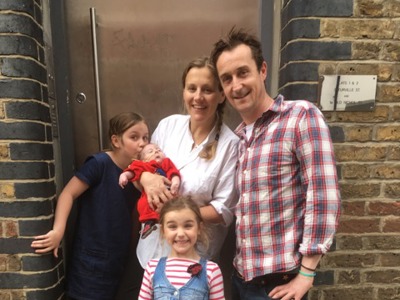
Wrongful birth – compensation and claims
An unexpected pregnancy due to medical mistakes can be distressing and life-changing. If you’ve been affected by this kind of negligence, our specialist birth injury lawyers are here to support you and help you pursue compensation.
The definition of wrongful birth is when a child is born who would not have been born without negligent treatment. The wrongful birth claim belongs to the parents (usually the mother), as it’s they who have received the negligent treatment.
As parents, you may have taken preventative measures to avoid falling pregnant that have not worked. Alternatively, you may have been misinformed about certain details of the pregnancy that would have changed your decision to go through with it.
There are two main types of wrongful birth cases:
- Failed vasectomy or sterilisation
- Failure to warn the parents of the child’s disability or genetic disease
If you think you have a wrongful birth claim, find out more about what it covers and get in touch with our team at Leigh Day.
Get help today
Get in touch and we'll call you back
More about wrongful birth
Wrongful birth is when a baby is born despite the parents acting to avoid pregnancy - usually through a vasectomy or sterilisation. The term is also used if parents would have otherwise terminated the pregnancy had they known about the baby’s inherited genetic condition or disease. Wrongful birth cases can take many forms, but each one is usually due to an avoidable medical mistake. Wrongful birth claims typically relate to the following failures or misdiagnoses.
A vasectomy is a permanent surgical procedure that cuts or seals the tubes carrying a man’s sperm to prevent pregnancy. Failed vasectomies occur for less than 1% of men.
There are three main reasons this can happen:
- Surgical negligence: Errors can occur if your surgeon misses the tubes during the procedure. Previous surgery in the area can increase the risk, but the surgeon/doctor should know if this happens.
- Having sex too soon: Ignoring medical advice and having unprotected sex within the first 12 weeks of having your procedure. Unprotected sex during this time could lead to pregnancy.
- Tubes reconnect: Occasionally the vas deferens (the tubes that are blocked/snipped) can reattach on their own, with small channels forming in scar tissue.
Female sterilisation is when a woman’s fallopian tubes are blocked or sealed to prevent fertilisation. It’s more than 99% effective at preventing pregnancy.
However, there is a risk the operation will not work – as in some cases blocked tubes can re-join either immediately or years later.
Similar to a vasectomy, you can have a wrongful birth claim if sterilisation fails due to medical or surgical negligence.
Sterilisation procedures can involve applying clips or rings over the fallopian tubes or cutting, tying and removing part of it. If the surgeon makes a mistake, the sterilisation may not work.
Genetic tests are sometimes carried out during pregnancy to check if the foetus is affected by an inherited family-specific disease.
It can also be carried out to test if the mother is a ‘carrier’ – i.e. they do not have the condition, but there is a chance they could pass it on to their children.
Accurate identification of a genetic condition in the foetus could result in the parents deciding to terminate the pregnancy. A missed or inaccurate diagnosis can have worse consequences, leading to a wrongful birth.
The two main ways this can happen are through incompetence, if the medical professional doing the scan fails to spot signs of a genetic condition, or if the condition is identified but the parent(s) are not informed.
Types of genetic conditions can include:
- Down syndrome
- Cystic fibrosis
- Huntington’s disease
- Arthritis
- Sickle cell disease
- Heart disease
- Turner syndrome
There are other, non-genetic and structural conditions that pregnancy scans can pick up:
- Cerebral palsy
- Hole in the heart
- Spina bifida
- Brain malformations
McFarlane v Tayside Health Board was a case decided by the House of Lords in November 1992. It ruled that when an unwanted pregnancy (and wrongful birth) happened due to negligence related to a vasectomy operation, the health authority would be liable for damages for the physical effects of the pregnancy and childbirth.
However, the health authority would not be liable for the costs of bringing up the child unless the child had a disability.
This followed a claim from a couple where the father had a vasectomy in October 1989 and was informed by letter in March 1990 that his sperm count was negative. However, the mother became pregnant following the resumption of intercourse and gave birth to their fifth child in May 1992.
They claimed pain and distress for the mother and the financial costs they both incurred from raising the child. The McFarlane v Tayside Health Board ruling awarded damages for the pain and distress but said it was not fair, just or reasonable to impose liability on the doctor or their employer (the health authority) for the responsibilities imposed on or accepted by the parents to bring up the child.
The amount of compensation you could receive from a wrongful birth will depend on the exact nature of your case.
Payment normally covers the following impacts of unwanted pregnancy and labour:
- Physical pain
- Emotional distress
- Incapacity
- Re-sterilisation procedure costs
This is usually around £5,000 in total. However, it can be higher if the pregnancy or labour was exceptionally complicated or resulted in post-natal depression. You can also claim for any loss of earnings due to the unwanted pregnancy – based on your maternity pay.
You will not receive compensation for the costs of bringing up a child after a failed vasectomy or sterilisation unless the child is born with a disability. This is due to the McFarlane v Tayside Health Board and Rees v Darlington Memorial Hospital rulings.
Depending on the individual circumstances of your sterilisation, you could receive around £15,000 in compensation as you have lost the right to limit the size of your family. At Leigh Day, we can advise on the damages you may be able to recover.
Making a claim
As the circumstances of all wrongful birth claims are different, the first step to bringing a claim is talking to one of the medical negligence team at Leigh Day about your case.
They will listen to your story and advise on whether you have grounds to bring a claim or not. This will include assessing whether your case meets the official wrongful birth definition, who is liable for the mistake and what your chances of a successful wrongful birth lawsuit are.
If our team believe you have a strong case, they will likely advise you gather any evidence you have to support your claim. This could include medical documents relating to a vasectomy/sterilisation, during pregnancy, any scans and post-birth.
Why choose Leigh Day?
The medical negligence team at Leigh Day has decades of experience in the field, including successfully claiming compensation for a variety of wrongful birth cases. Our team includes solicitors who specialise in wrongful birth lawsuits, supporting clients in an understanding and conscientious way.
Brendan Hope is a Leigh Day partner and clinical negligence solicitor with around 15 years’ experience. He specialises in clinical negligence, including wrongful birth claims. Chambers Directory ranks him as a Band 2 solicitor, and he has worked across an array of high-value settlements.

What the directories say
Brendan Hope is ‘very astute and tenacious’ according to one interviewee, while another highlights him as ‘very thorough, on top of every detail, readily available and proactive.’”
Chambers and partners


